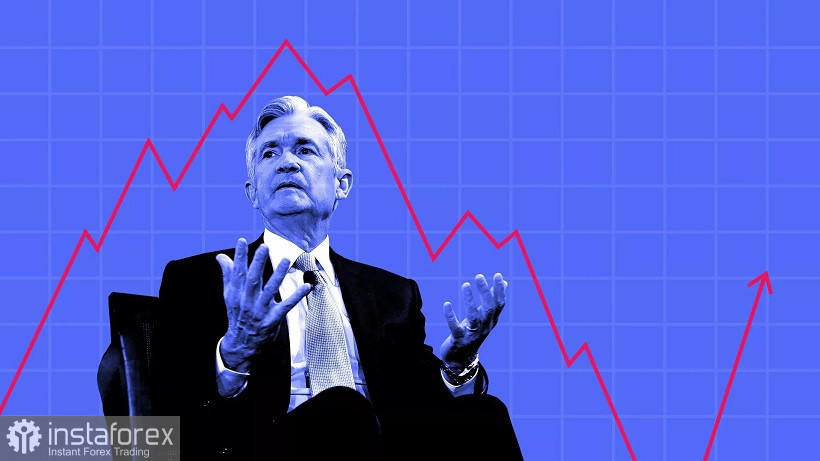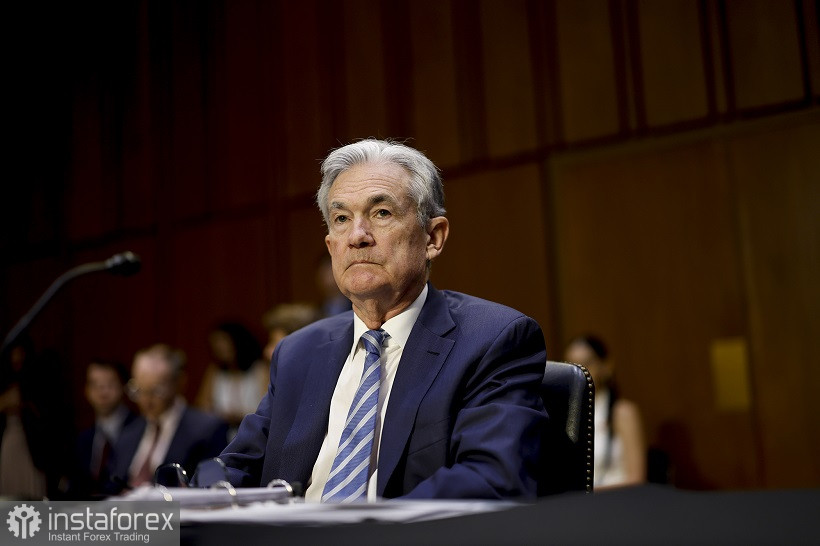Yesterday, the US dollar reacted negatively to Jerome Powell's speech in Congress. Against the euro, the greenback weakened to 1.0606, allowing the pair to reach a new weekly high. Looking ahead, the EUR/USD pair could not stay below 1.6000 and reversed, recouping almost all its losses during the Asian session on Thursday.

In fact, there were and are no good reasons for the trend reversal. The head of the Fed voiced rather hawkish statements, confirming the aggressive attitude of the US regulator. Take alone his statement that the Fed would raise the interest rate until it sees "compelling evidence that inflation is moving down." There's also another statement from Powell that should be highlighted. According to him, US inflation "has obviously surprised to the upside over the past year, and further surprises could be in store. We therefore will need to be nimble in responding to incoming data and the evolving outlook." In addition, Powell assured Committee that the US economy was in good shape and was "well positioned to handle tighter monetary policy."
In other words, Jerome Powell made it clear that the regulator would maintain a hawkish course by continuing to raise interest rates until the inflationary growth cools down. He actually acknowledged that his earlier predictions that inflation would stabilize in the second half of the year were completely unreal. Moreover, according to him, the key inflation indicators can still create "surprises" of an obviously negative nature. The gist of these messages is that the Fed will keep raising the rate.
The only question is at what pace the regulator will do it. Powell did not give a concrete answer to this question yesterday and this confused the dollar bulls. Traders were baffled, in fact, by a single phrase: "the pace of those changes will continue to depend on the incoming data and the evolving outlook for the economy. We will make our decisions meeting by meeting."
This statement discouraged US dollar bulls. Apparently, the market was expecting an announcement of a 75-point rate hike at both the July and September meetings. However, Powell did not promise anything leaving room for maneuver. In fact, he has "tied" the pace of monetary tightening to the inflationary growth rate. By the way, the 75-point rate hike at the last meeting was adopted quickly, after the release of the May data on CPI growth in the US. At the press conference, Jerome Powell admitted that the central bank had intended to keep the 50-point rate hike because it expected inflation to flatten in the second quarter. Nevertheless, inflation indicators "surprised to the upside" and the regulator decided to apply more aggressive countermeasures. Obviously, further rate increases will depend on the key inflation indicators - the CPI and PCE.

Thus, Jerome Powell did not announce a 75-point rate hike. Commenting on the results of the June meeting, he said that the Committee members would decide between the two options at the next meeting: to raise the rate by 50 points or by 75 points. Obviously, the Fed will face the same choice at the September meeting. That's why the main signal voiced by Powell in Congress was rather vague: "We anticipate that ongoing rate increases will be appropriate; the pace of those changes will continue to depend on the incoming data and the evolving outlook for the economy."
Traders' hawkish expectations were only half justified: Powell did not disappoint US dollar bulls, but he did not trigger another US dollar rally either. That's why the EUR/USD pair turned out to be hovering slightly above 1.0500. Bulls couldn't hold the price above 1.0600, and bears couldn't keep it below 1.0500 today.
Notably, on the eve of the fall midterm elections to Congress, the head of the Fed became the object of criticism from both the Democratic Party and the Republican Party. Powell is a Republican, appointed for his position by Trump. For example, the Democrats said that the increase in the interest rate increased the risk of recession. In turn, some Republicans blamed the head of the Fed for not raising the interest rate earlier in order to prevent a strong rise in inflation. Obviously, being "in the crossfire," Powell could not openly advocate a 75-point rate hike or question the fact of tightening monetary policy.
Today we will watch the second round of Jerome Powell's speech in Congress (17:00-18:00 Moscow time). It is likely that he will repeat the points he has already made. However, judging by the experience of the previous years, it is not a certainty: the Congressmen will ask qualifying questions, the answers to which may cause increased volatility in the EUR/USD pair. Hence, it is better to choose a wait-and-see approach at the moment.
 English
English 
 Русский
Русский Bahasa Indonesia
Bahasa Indonesia Bahasa Malay
Bahasa Malay ไทย
ไทย Español
Español Deutsch
Deutsch Български
Български Français
Français Tiếng Việt
Tiếng Việt 中文
中文 বাংলা
বাংলা हिन्दी
हिन्दी Čeština
Čeština Українська
Українська Română
Română

